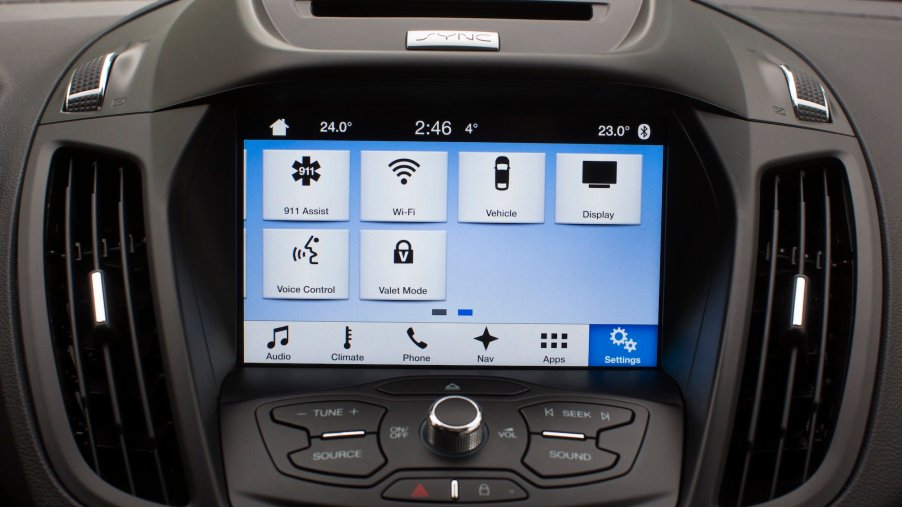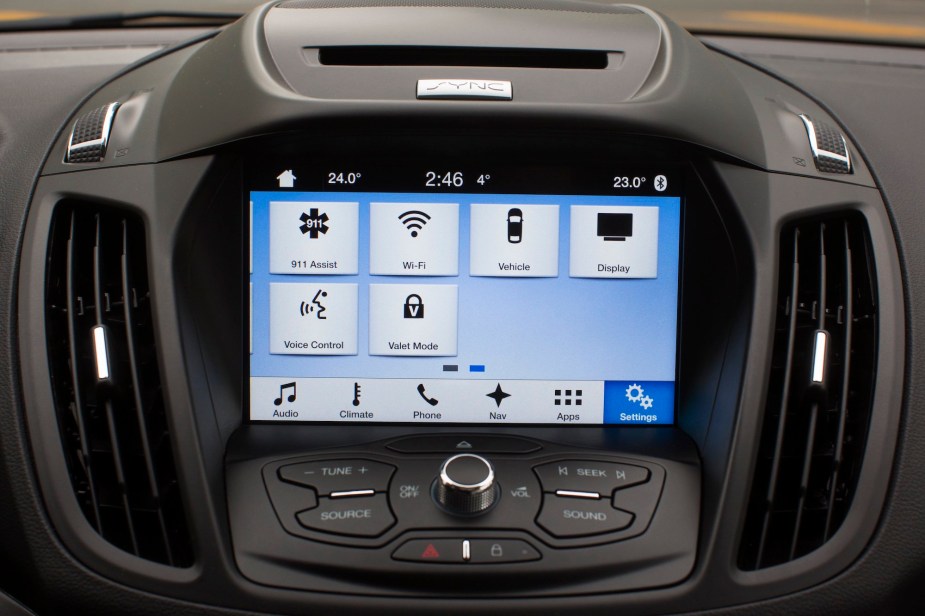
Vehicle Infotainment Systems Are ‘Most Problematic’ According to J.D. Power
Anyone that’s bought a car in the past three years knows how badly the pandemic has affected the auto industry. Due to the chip shortage, reservations have been delayed, and fewer cars are available on dealership lots. On average, used car prices are also reaching historic highs of over $34,000.
According to a J.D. Power study, the quality of new cars has also been affected. Due to fewer resources available to automakers, cars are produced without as many features or features that clearly don’t work correctly. Here’s what the study found.
New vehicle infotainment systems have gotten worse

In this year’s J.D. Power initial quality study, the infotainment systems found in 2022 models had many problems. Some of these are more forgivable than others, such as only one or two USB ports inside the car. Someone might have to wait their turn to charge their phone, but it’s not posing a considerable safety or quality issue.
However, the study also cites unpredictability concerning audio volume. This might mean that your car’s stereo system could suddenly become too loud, which would likely distract you from driving.
It can also be an issue from a quality standpoint. The mixing and volume levels should be as good as advertised if you buy a higher trim with a premium speaker system.
The study also cited problems for cars with Bluetooth and voice recognition features. Both can be valuable tools for keeping your hands off your phone and where they should be: on the wheel. It’s a significant source of frustration when they don’t work as promised.
Many infotainment systems nowadays also don’t have the most reliable displays or touchscreens. The unit might stop registering user inputs or reboot itself as you’re driving, needing several seconds to restart.
It’s problematic because you don’t just use the infotainment system to switch songs on your playlist. It’s also where you see the footage on your backup camera or use your car’s navigation features. Some cars, such as Tesla models, even require you to adjust climate and audio levels exclusively on the touchscreen.
Finally, the biggest problem cited in the quality study is smartphone connectivity. Smartphone integration issues have been rampant since 2020, with many users experiencing audio glitches and connection problems when using certain phones.
PHEVs and BEVs have problems too
While EVs and plug-ins are undoubtedly better for the environment, they’re apparently more prone to problems than gas-operated cars, according to J.D. Power. For example, Tesla cars have an average of 226 problems per 100 vehicles.
Most BEVs and PHEVs have an estimated 239 to 240 problems per 100 vehicles. In comparison, there’s an average of 175 problems per 100 average internal combustion engine cars.
J.D. Power also says that the quality of certain safety features has declined, particularly lane-keeping assist technology. The study concluded that lower-priced mass-market vehicles generally have more issues than luxury vehicles. However, three non-luxury brands were less problematic than their premium rivals.
Which new cars have the least problems?
Chevrolet, Dodge, and Buick all reportedly have fewer frustrating infotainment systems and general quality issues. A Genesis is a good luxury car brand to buy right now, followed closely by Cadillac and Lexus. The Chevy Corvette is one of the best models, with only 101 problems per 100 vehicles.
It might seem like a hassle until you look at the industry average. Most 2022 cars have at least 180 problems per 100 vehicles.
Even exotic models like Porsche and Maserati exceed that average. The state of vehicle quality likely won’t improve until some of these supply chain issues have settled.


